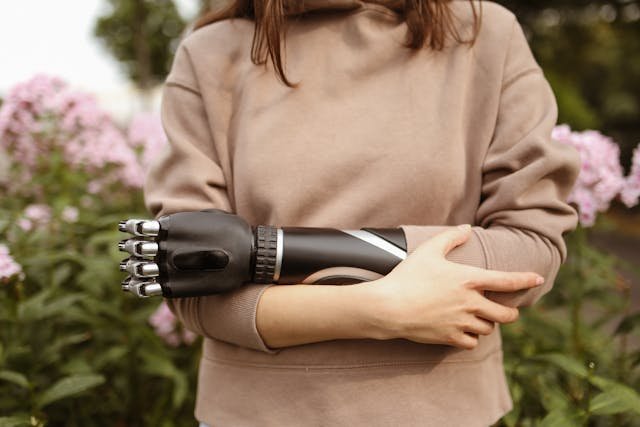For decades, prosthetic limbs have focused primarily on functionality—helping users regain movement after limb loss. But something crucial has always been missing: the sense of touch. Without sensory feedback, even the most advanced prosthetics still feel mechanical and detached from the body.
But that’s changing fast. The next generation of sensory prosthetics is here, offering real-time touch perception, temperature sensing, and even pain detection. With AI, haptic feedback, and neural integration, amputees can finally experience what it feels like to touch, hold, and interact with objects just like they did before limb loss.
At Robobionics, we are committed to pushing the boundaries of prosthetic innovation, ensuring that users experience not only movement but also the sensation that makes human touch so powerful. In this article, we explore how sensory prosthetics are transforming lives, what breakthroughs we can expect by 2030, and how this technology is redefining the future of artificial limbs.
1. What Are Sensory Prosthetics and How Do They Work?
Sensory prosthetics are artificial limbs that restore the sense of touch by sending signals directly to the nervous system or brain. Unlike traditional prosthetics, which only allow basic movement, sensory prosthetics enable users to feel textures, pressure, and even temperature changes.
This is achieved through advanced haptic feedback systems, AI-powered sensory mapping, and neural implants that allow the prosthetic limb to communicate directly with the user’s nervous system. When a prosthetic hand touches an object, sensors in the fingers detect pressure, texture, and temperature, and these sensations are relayed to the brain in real-time.
By 2030, sensory prosthetics will no longer be experimental—they will be mainstream, allowing amputees to experience fully immersive, natural sensations with their artificial limbs.
2. The Science Behind Restoring Touch: Haptic Feedback and AI
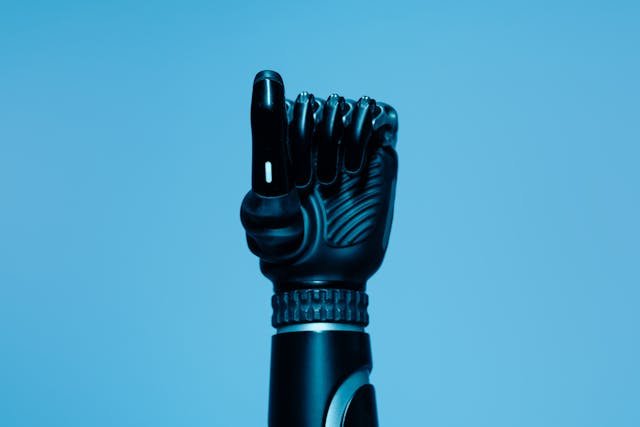
One of the key technologies enabling sensory prosthetics is haptic feedback—a system that mimics the sensation of touch by using tiny electrical impulses or vibrations to stimulate the nerves.
Haptic feedback works in three main ways:
- Vibrational Feedback – Small motors in the prosthetic limb generate vibrations to simulate touch sensations.
- Electro-Tactile Stimulation – Electrical pulses are sent to the skin or nerves, creating the feeling of texture and pressure.
- Neural Integration – Sensors in the prosthetic limb send signals directly to the brain, recreating a true sense of touch.
AI plays a crucial role by analyzing sensory data and refining the feedback experience. Machine learning algorithms can fine-tune pressure sensitivity, ensuring that a prosthetic hand does not grip too hard or too softly when picking up an object.
By 2030, AI-driven haptic systems will allow sensory prosthetics to provide instant, lifelike touch feedback, making them feel more like natural limbs than ever before.
3. Neural Integration: Connecting Prosthetics Directly to the Brain
For prosthetics to truly feel natural, they must be directly linked to the brain’s sensory processing system. This is where neural integration comes in—allowing artificial limbs to become a seamless extension of the body.
Using brain-machine interfaces (BMIs) and peripheral nerve stimulation, scientists are now able to:
- Map sensory signals from the prosthetic limb to the brain’s touch centers.
- Rewire damaged nerves so that the brain recognizes the prosthetic as part of the body.
- Provide bidirectional communication, meaning that users can send movement commands to the limb and receive sensory feedback in return.
By 2030, fully neural-integrated prosthetics will allow users to feel touch as naturally as if they had never lost their limb, revolutionizing the way amputees interact with the world.
4. Temperature Sensation: Can Prosthetics Detect Heat and Cold?
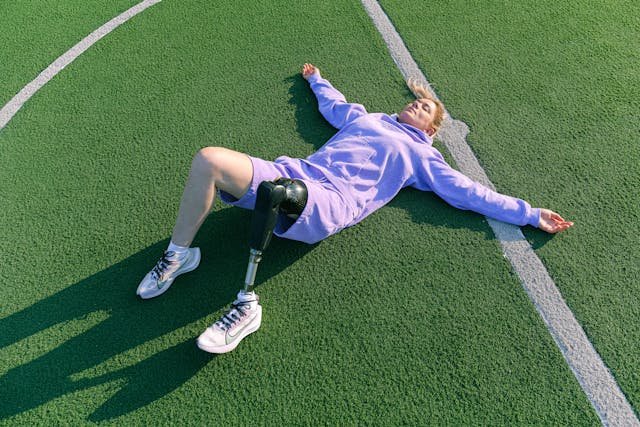
Another exciting development in sensory prosthetics is temperature detection, which allows users to feel warm and cool surfaces just like with a biological limb.
Temperature-sensing prosthetics use:
- Thermal sensors that detect heat levels and send signals to the brain.
- Electrothermic stimulation to recreate the feeling of warmth or cold through skin contact.
- AI-based temperature mapping, which predicts safe temperature levels to prevent burns or frostbite.
By 2030, sensory prosthetics will include full heat and cold detection, enabling users to safely handle hot drinks, feel the warmth of the sun, and even experience cold water on their artificial skin.
5. Pain Perception in Sensory Prosthetics: A Necessary Feature?
While pain is often seen as a negative experience, it serves an important role—it alerts the body to danger. Sensory prosthetics are now being developed with controlled pain perception, ensuring that users can detect harmful stimuli like sharp objects, excessive pressure, or extreme temperatures.
This is achieved through:
- Soft robotics that mimic the skin’s pain receptors.
- AI-powered pressure monitoring to prevent accidental injuries.
- Neural feedback loops that allow the brain to process danger signals just as it would with a natural limb.
By 2030, prosthetic limbs will be able to detect and react to pain stimuli, improving safety and injury prevention for users.
6. Sensory Prosthetics in Everyday Life: How They Are Changing the World
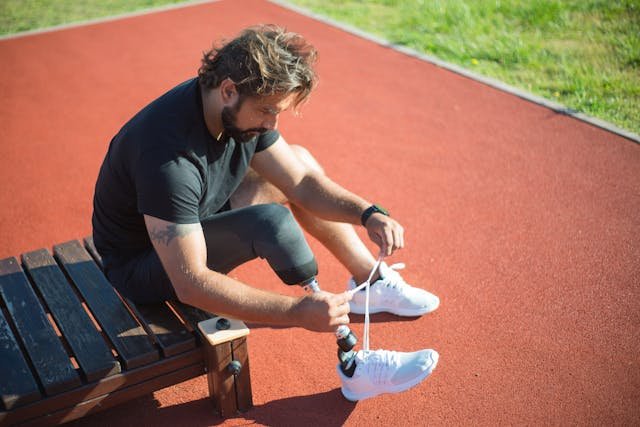
The real impact of sensory prosthetics is seen in how they transform daily life for amputees. With the ability to feel and interact with the world naturally, these advanced artificial limbs are helping users:
- Hold fragile objects with precision, without fear of breaking them.
- Shake hands and feel social touch, improving emotional connections.
- Perform delicate tasks like typing, writing, or cooking with improved accuracy.
By 2030, sensory prosthetics will no longer be just about mobility—they will redefine how amputees experience life, relationships, and independence.
7. The Future of Sensory Prosthetics: What to Expect by 2030
With rapid advancements in AI, neurotechnology, and robotics, the next five years will bring even more groundbreaking innovations in sensory prosthetics.
By 2030, we can expect:
- Fully neural-integrated prosthetics that feel exactly like natural limbs.
- Prosthetic skin with full sensory feedback, including touch, temperature, and pain detection.
- Affordable, 3D-printed sensory prosthetics available worldwide.
- Smart prosthetics that connect to wearable devices for enhanced control and feedback.
These advancements will not just restore lost function but also improve the human experience, allowing amputees to feel as if they never lost their limb in the first place.
8. The Role of Soft Robotics in Creating Lifelike Sensory Prosthetics
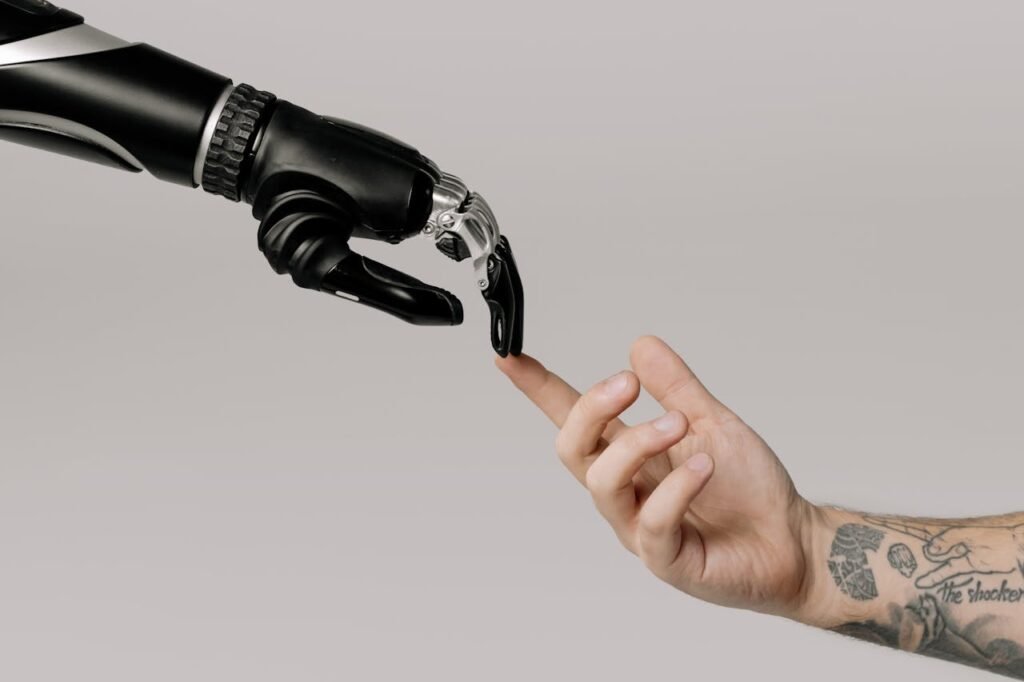
One of the biggest challenges in sensory prosthetics is replicating the flexibility and responsiveness of human skin. Traditional prosthetic materials are often rigid and unyielding, making movements feel artificial and unnatural. Soft robotics is addressing this issue by introducing materials that can stretch, bend, and adapt to external forces just like real skin.
Using advanced polymers and bio-inspired designs, soft robotic prosthetic hands and limbs can conform to different shapes, allowing users to interact more naturally with objects. These materials can also house embedded micro-sensors that detect pressure, vibrations, and even moisture, sending these sensations back to the user through neural integration. The result is a prosthetic limb that not only moves with precision but also provides a tactile experience that closely mimics human touch.
By 2030, soft robotics will be fully integrated into sensory prosthetics, allowing artificial limbs to feel as natural as biological ones. This advancement will not only enhance the functional use of prosthetics but also improve comfort and reduce strain on the residual limb, making long-term use easier and more intuitive for users.
9. How Sensory Prosthetics Improve Mental and Emotional Well-Being
The ability to feel through a prosthetic limb is not just about regaining touch—it also plays a crucial role in emotional and psychological well-being. Many amputees experience phantom limb syndrome, where they continue to feel sensations, pain, or discomfort in the missing limb. Sensory prosthetics are proving to be a powerful solution for reducing these phantom sensations by providing real-time sensory feedback.
When a prosthetic limb is equipped with haptic feedback, the brain begins to recognize it as part of the body. This neural adaptation significantly reduces phantom limb pain, as the brain no longer interprets the missing limb as an absence but rather as a functional extension. Studies have shown that users of sensory prosthetics report a stronger emotional connection to their artificial limbs, feeling less detached and more in control of their movements.
By 2030, sensory prosthetics will not just be about restoring physical abilities; they will play an active role in emotional healing, helping amputees feel whole again. The psychological impact of regaining a sense of touch will reshape how prosthetic users interact with others, boosting their confidence in social situations and strengthening their sense of identity.
10. The Impact of AI in Perfecting Sensory Prosthetic Feedback
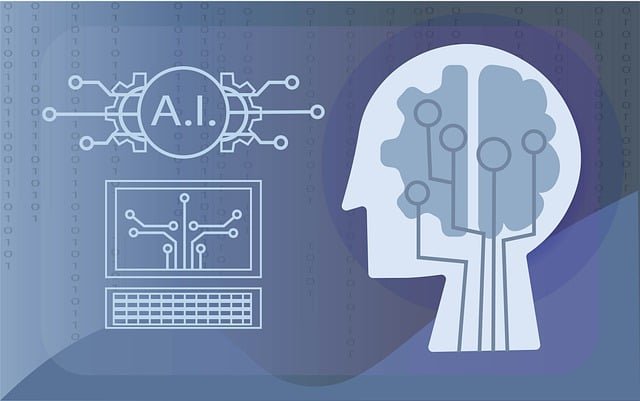
Artificial intelligence is making sensory prosthetics more advanced by fine-tuning the way they process and deliver touch sensations. AI-powered sensory mapping allows prosthetic limbs to learn how users interact with their environment, improving feedback accuracy over time.
For example, a prosthetic hand using AI can distinguish between a rough surface and a smooth one by analyzing how pressure is distributed across the fingers. Over time, it refines this understanding, ensuring that sensory feedback is more detailed and natural. AI also plays a critical role in adjusting grip strength, preventing objects from slipping while ensuring delicate items are not crushed.
By 2030, AI-driven sensory prosthetics will provide highly personalized touch experiences, adapting in real-time to the user’s needs. This will eliminate the learning curve associated with using a prosthetic limb, making everyday tasks feel as effortless as they did before limb loss.
11. The Evolution of Prosthetic Skins with Advanced Textures and Responses
Sensory prosthetics are not just improving internally; their external design is also undergoing a transformation. Scientists are now developing artificial skin that looks, feels, and reacts like human skin. These next-generation prosthetic skins are made from silicone-based composites and bioengineered polymers that can stretch and respond to pressure, temperature, and humidity.
Unlike traditional prosthetic covers, which serve only as a cosmetic layer, these new materials contain embedded nano-sensors that detect tactile input. When the user touches an object, the prosthetic skin sends real-time data to the nervous system, allowing the brain to recognize shape, firmness, and texture. Some advanced designs even include thermoregulatory elements, enabling the prosthetic to adjust its temperature to match the surrounding environment, reducing discomfort from extreme heat or cold.
By 2030, prosthetic skin technology will make artificial limbs nearly indistinguishable from biological ones. Users will not only regain the ability to feel but also experience more natural interactions with people and objects, further breaking down the emotional and physical barriers that amputees often face.
12. How Wearable Technology is Enhancing Sensory Prosthetic Performance
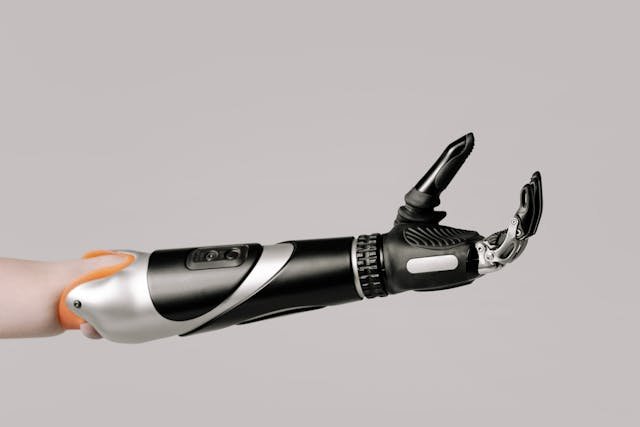
Wearable technology is revolutionizing sensory prosthetics by providing real-time data on limb performance, muscle activity, and sensory responses. Smart prosthetic limbs are now equipped with wireless connectivity that allows them to sync with wearable devices such as fitness trackers and smartphones.
These wearables monitor prosthetic function and alert users to potential issues, such as excessive strain on the artificial limb or the need for recalibration. They also allow users to fine-tune their sensory feedback settings, adjusting the level of pressure sensitivity or haptic intensity based on their daily activities.
By 2030, wearable technology will work seamlessly with sensory prosthetics, giving users greater control and insight into their artificial limbs. This level of customization will make prosthetic use more intuitive, ensuring that sensory feedback is always optimized for comfort and efficiency.
13. The Role of Sensory Prosthetics in Professional and Industrial Applications
Sensory prosthetics are not only restoring daily functionality but are also opening doors for amputees in professional fields that were once considered inaccessible. People who rely on fine motor skills, such as surgeons, artists, and musicians, are now able to return to their professions thanks to advanced touch-sensitive prosthetic limbs.
A prosthetic hand with high-resolution haptic feedback can allow a musician to feel the pressure of piano keys, enabling them to play with the same dexterity as before. Similarly, surgeons using sensory prosthetic hands can perform delicate operations with a precise touch, feeling the difference between tissues as they operate. Factory workers and technicians can also benefit from pressure-sensitive robotic limbs, improving safety and efficiency in manual labor industries.
By 2030, sensory prosthetics will break occupational barriers, ensuring that people with limb loss are not limited in their career choices. With the ability to feel and respond to different textures and materials, prosthetic users will be able to perform specialized tasks that were once thought impossible with artificial limbs.
14. The Future of Full-Body Sensory Prosthetics
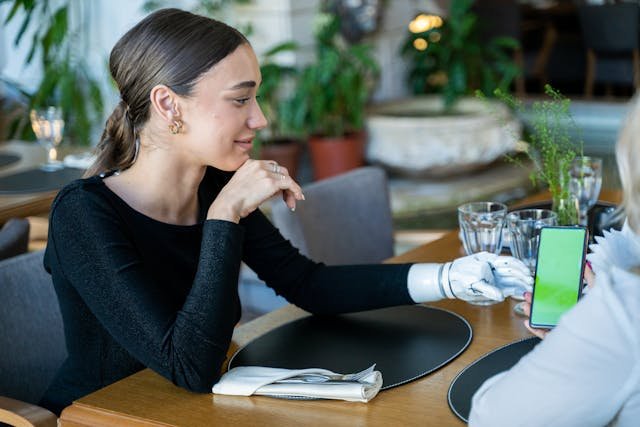
As technology advances, the concept of sensory prosthetics is expanding beyond individual limbs to full-body solutions. Scientists are now exploring exoskeletons with integrated sensory feedback, allowing individuals with spinal cord injuries to regain movement and touch sensation across their entire bodies.
These full-body prosthetic systems work by creating artificial nerve pathways that connect with existing neurons, enabling users to experience movement and touch simultaneously. By embedding haptic sensors across the entire exoskeleton, wearers can regain balance, coordination, and even the sensation of walking on different surfaces.
By 2030, full-body sensory prosthetics will help individuals with paralysis regain mobility and physical sensation, marking a significant leap forward in medical and robotic technology. These advancements will not only benefit amputees but also those with neurological disorders and mobility impairments, redefining what is possible for people with physical disabilities.
Final Thoughts: The Future of Touch in Prosthetics is Here
Sensory prosthetics are reshaping the future of artificial limbs, offering users the ability to feel, react, and interact with the world in ways never before possible. With neural integration, AI-powered touch feedback, and temperature sensation, the next generation of prosthetics will blur the line between artificial and natural limbs.
At Robobionics, we are committed to making these innovations accessible to everyone, ensuring that no amputee is left behind in the future of sensory prosthetics.
If you’re excited about the possibilities of touch-enabled prosthetics, book a free demo with Robobionics today and take the first step toward a life where artificial limbs truly feel real!



